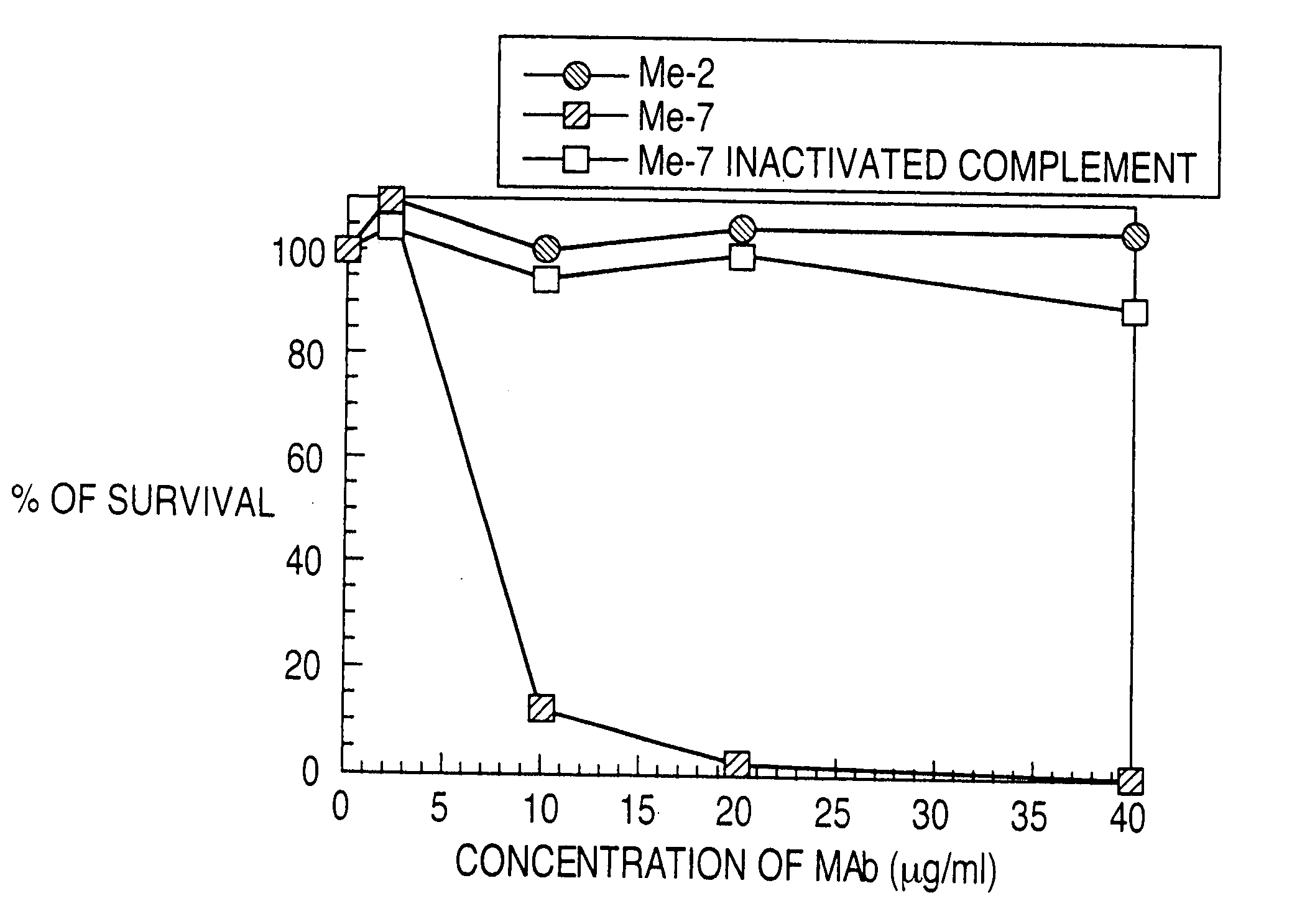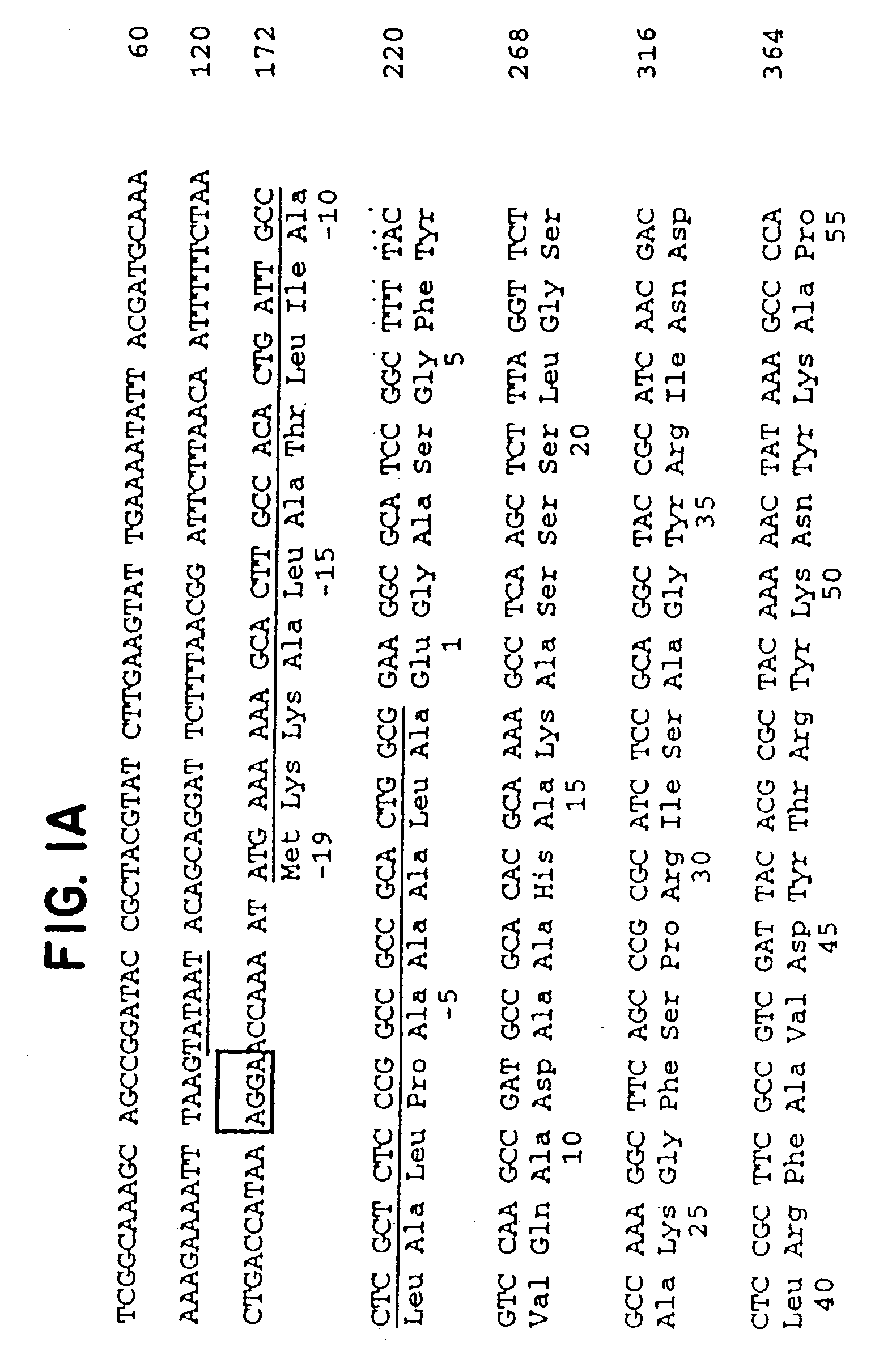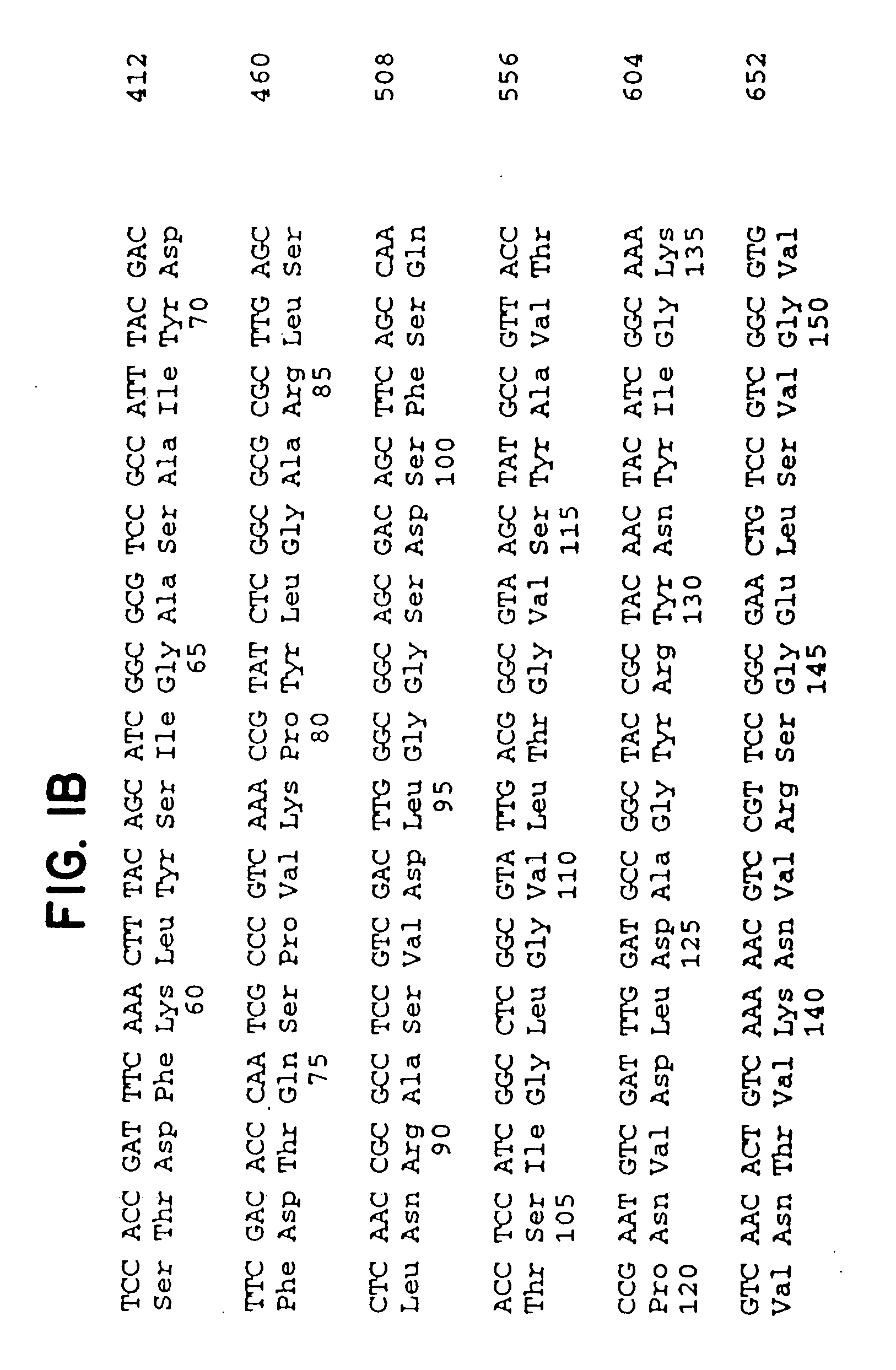Proteinase K resistant surface protein of neisseria meningitidis
a technology of neisseria meningitidis and surface protein, which is applied in the direction of peptide/protein ingredients, bacteria, peptide sources, etc., can solve the problems of ineffective capsular polysaccharide vaccines presently available, major cause of death and morbidity in the world, and inability to effectively induce the production of protective antibodies in young infants
- Summary
- Abstract
- Description
- Claims
- Application Information
AI Technical Summary
Benefits of technology
Problems solved by technology
Method used
Image
Examples
example 1
Treatment of Neisseria meningitidis Outer Membrane Preparations with Proteolytic Enzymes and the Subsequent Identification of an Enzyme Resistant Neisseria meningitidis 22 kDa Surface Protein
[0135] Several antigenic preparations derived from whole cell, lithium chloride, or sarcosyl extracts were used to study the ultrastructure of Neisseria meningitidis outer membrane. The outer membrane of Gram-negative bacteria acts as an interface between the environment and the interior of the cell and contains most of the antigens that are freely exposed to the host immune defense.
[0136] The main goal of the study was the identification of new antigens which can induce a protective response against Neisseria meningitidis. One approach used by the inventors to identify such antigens, was the partial disruption of the antigenic preparations mentioned above with proteolytic enzymes. The antigenic determinants generated by the enzymatic treatments could then be identified by the subsequent analy...
example 2
Generation of Monoclonal Antibodies Specific for the 22 kDa Neisseria meningitidis Surface Protein
[0142] The monoclonal antibodies described herein were obtained from three independent fusion experiments. Female Balb / c mice (Charles River Laboratories, St-Constant, Quebec, Canada) were immunized with outer membrane preparations obtained from Neisseria meningitidis strains 604A, 608B and 2241C respectively serogrouped A, B and C. The lithium chloride extraction used to obtain these outer membrane preparations was performed in a manner previously described by the inventors. [Brodeur et al., Infect. Immun. 50, p. 510 (1985)]. The protein content of these preparations were determined by the Lowry method adapted to membrane fractions [Lowry et al., J. Biol. Chem. 193, p. 265 (1951)]. Groups of mice were injected intraperitoneally or subcutaneously twice, at three-week intervals with 10 mg of different combinations of the outer membrane preparations described above. Depending on the grou...
example 3
Molecular Cloning, Sequencing of the Gene, High Yield Expression and Purification of the Neisseria meningitidis 22 kDa Surface Protein
[0153] A LambdaGEM-11 genomic DNA library from Neisseria meningitidis strain 608B (B:2a:P1.2) was constructed according to the manufacturer's recommendations (Promega CO, Madison, Wis.). Briefly, the genomic DNA of the 608B strain was partially digested with Sau 3AI, and fragments ranging between 9 and 23 Kb were purified on agarose gel before being ligated to the Bam HI sites of the LambdaGEM-11 arms. The resulting recombinant phages were used to infect Escherichia coli strain LE392 (Promega) which was then plated onto LB agar plates. Nineteen positive plaques were identified after the immuno-screening of the library with the Neisseria meningitidis 22 kDa surface protein-specific monoclonal antibodies of Example 2 using the following protocol. The plates were incubated 15 minutes at −20° C. to harden the top agar. Nitrocellulos...
PUM
| Property | Measurement | Unit |
|---|---|---|
| molecular weight | aaaaa | aaaaa |
| molecular weight | aaaaa | aaaaa |
| pH | aaaaa | aaaaa |
Abstract
Description
Claims
Application Information
 Login to View More
Login to View More - R&D
- Intellectual Property
- Life Sciences
- Materials
- Tech Scout
- Unparalleled Data Quality
- Higher Quality Content
- 60% Fewer Hallucinations
Browse by: Latest US Patents, China's latest patents, Technical Efficacy Thesaurus, Application Domain, Technology Topic, Popular Technical Reports.
© 2025 PatSnap. All rights reserved.Legal|Privacy policy|Modern Slavery Act Transparency Statement|Sitemap|About US| Contact US: help@patsnap.com



